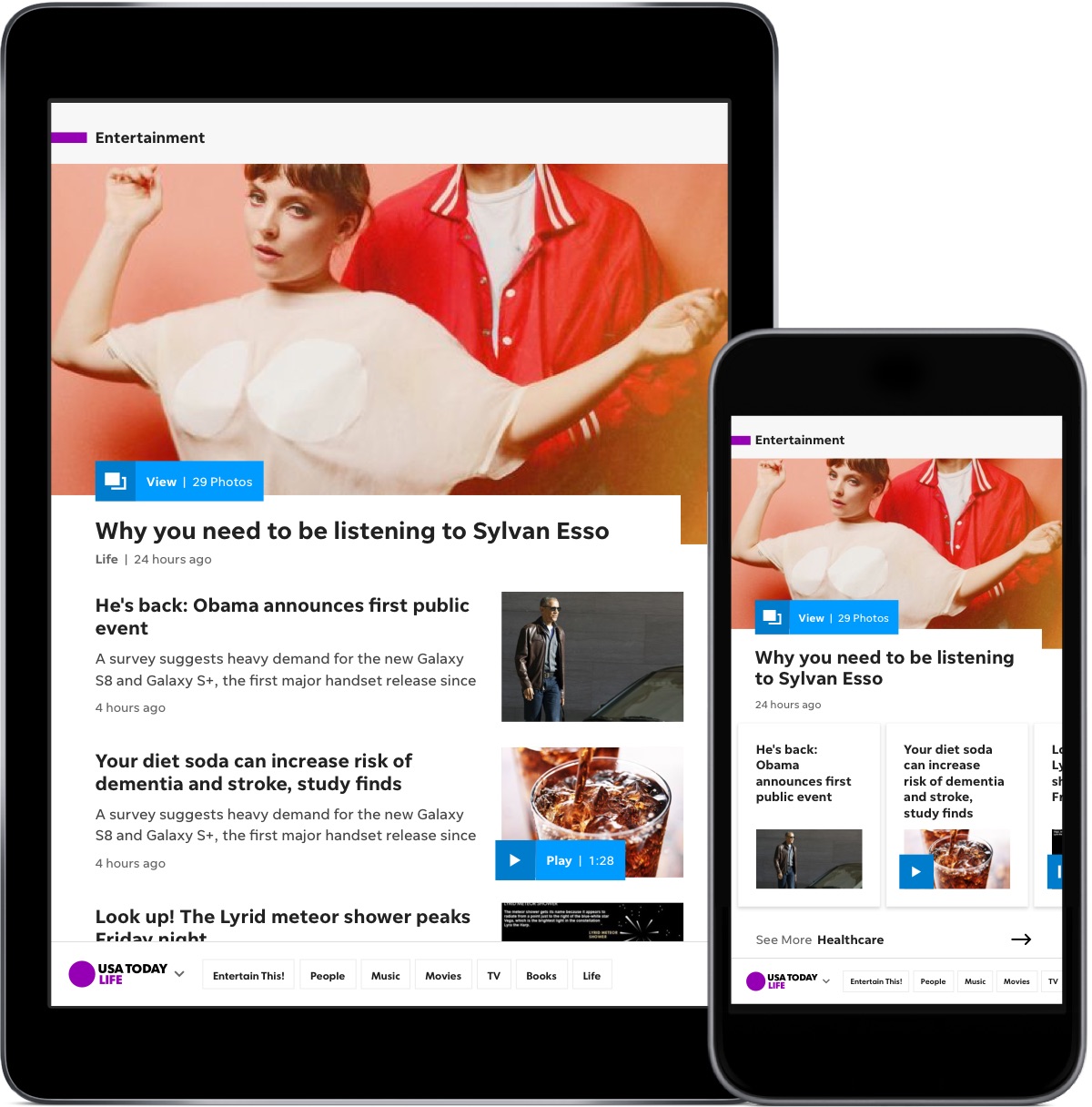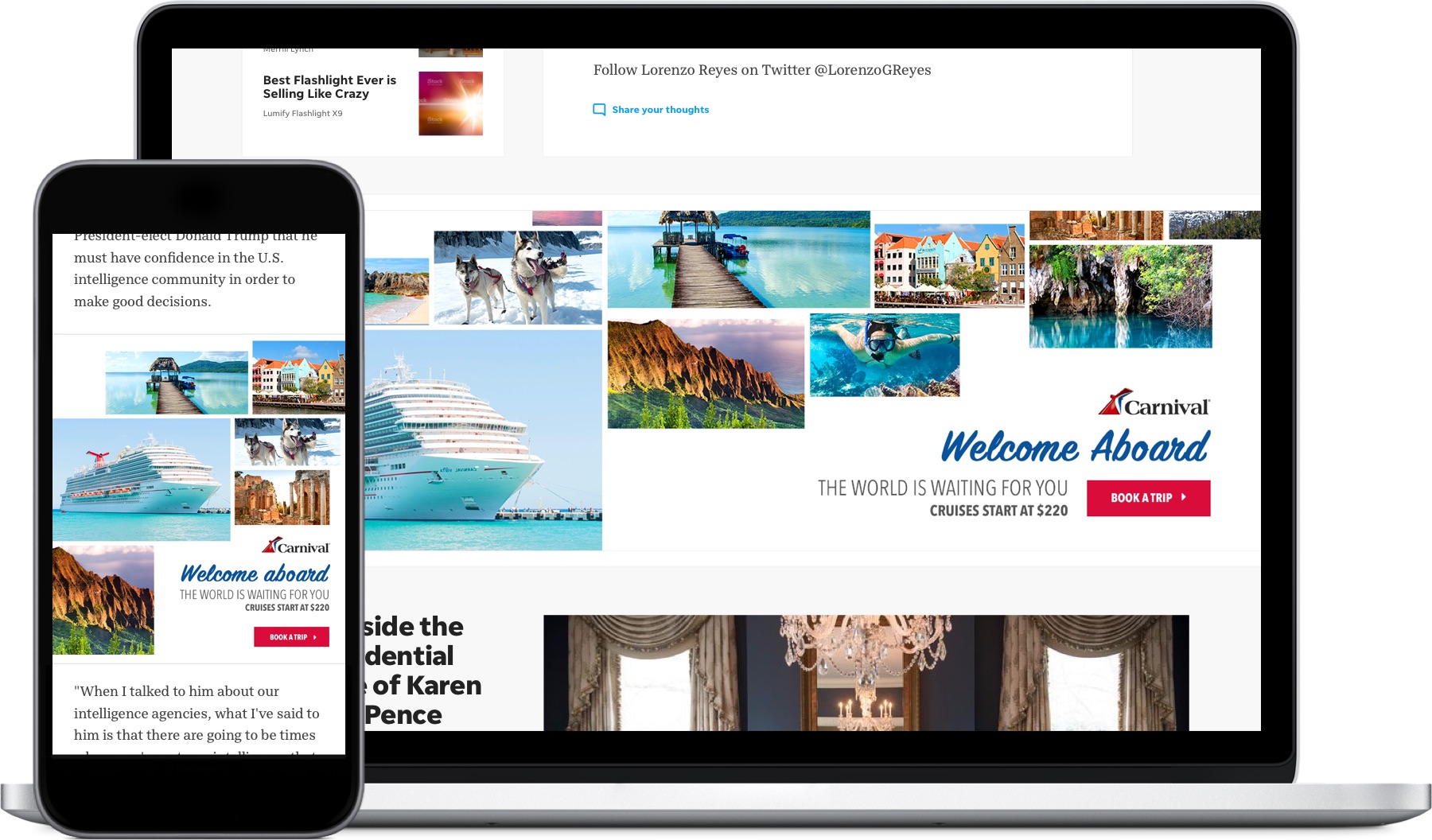USA TODAY Redesign 2017
A complete overhaul of the entire suite of USA TODAY digital products lead by our in-house product team. The project was a tremendous collaboration with numerous departments, stakeholders and our users. The product team wanted to build a large-scale system that unified the experience for our 14 million daily users as well as improving our internal workflow. Throughout the year, the product team grew to love reusable and reiterative module design.
Roles
Designer & Animator - worked with our product department that include teams of devs, product/ project managers and designers
Tools
Sketch, Photoshop, Framer, InVision, usertesting.com
Platforms
Responsive web
Skill Development
Grid system, module design, wireframes, responsive type, storytelling creation, advertisement improvements, animation standards, documentation, competitive analysis, style audits, brainstorming sessions, media asset management

















